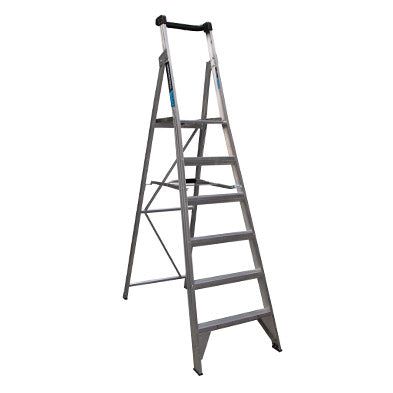Are Your Ladders & Scaffold Ready For The Year Ahead?
Many Kiwi Tradies are now returning back home after visiting relatives, or a holiday at the beach. After unpacking the beach toys and before re-packing your vehicle ready for a new year, its a good time to check your gear for unnoticed wear and tear that may have occurred during last year’s use. Here are 10 ways to keep your ladders and scaffolds ship-shape and ready for the year ahead.
Safety Checks on Your Ladders
1. For your ladders, this means checking the rubber feet. Have they worn through to the aluminium? Not only will this affect the ladder’s stability but this could also damage floors or other surfaces. If your ladder is one of the Easy Access range, you can contact us or any of our trade store distributors for a new set of replacement feet to be sent directly to you.
2. Carefully remove any plaster or other spills that may have clogged hinges and side stays. These jams can inhibit efficient use and cause corrosion. After completely clearing the jam, apply lubricant to the hinges for better performance.
3. Check the ladder for buckling, cracks and missing parts or any rivets that may have come loose over time. These and cracked or fractured welds will compromise the safe use of the ladder.
Easy Access aluminium ladders carry a 12-month Warranty covering parts and any labour required to remedy any fault arising from a manufacturing or material defect. This means we will repair and replace any ladder found to be faulty when used under normal conditions and according to the manufacturer’s instructions within New Zealand. Normal wear and tear deterioration are excluded from the warranty. For NZ-made Warthog ladders, this Warranty is for 10 years from the date of purchase.
4. In order to be compliant onsite, your ladder must have an ‘INDUSTRIAL’ label attached and display the maximum load-tested weight rating for the ladder. The minimum suggested load rating for ladders on a commercial site in New Zealand is 150Kg.
Safety Checks on Scaffold Towers
5. While your scaffold towers should be checked for signs of damage or missing components every time they are assembled, they also deserve some particular attention at this time.
6. Consult the manufacturer’s instructions to ensure that you have all required components, such as plan braces that provide the necessary strength to make the unit safe and compliant. Check you have a complete set of guardrails, and that all grasper clips are in full working condition.
7. Check welds for any cracking or fracturing that could compromise safety. Check casters and lubricate around the axle points. Ensure all brakes are functioning, and easy to engage and disengage.
8. A set of toeboards is required on scaffolds where a person or object can fall more than 2 metres. Some sites require toeboards regardless of height, so ensure you have these on-hand.
9. New Zealand regulations dictate that scaffold towers should be accessed from within the footprint of the tower. If you need to purchase a separate compatible ladder, contact us or your local trade store for advice.
10. Remember that if you will be working at a height to width ratio of more than 3:1 your scaffold must be secured with outriggers to be compliant (unless it is securely attached to a solid support surface). Make sure you have outriggers available or you know where to buy them should they be required.
Take the time before you start your work-year to make these checks and apply any required remedies. This will ensure your safety and compliance while you work at heights, keep your ladders and scaffolds in good condition, and minimise downtime throughout the year caused by clogs, defects and missing parts.
For more information on keeping your ladders and scaffolds complete, in good condition and site-ready for the year, contact us at Easy Access Co.
